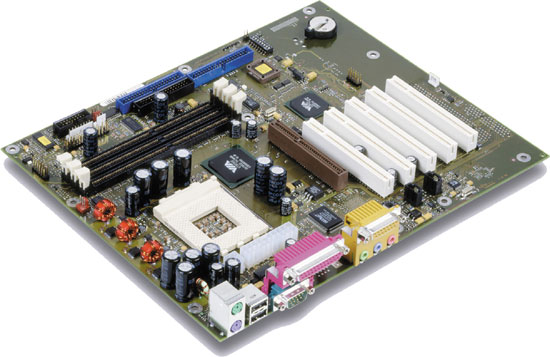65 Socket A Coolers Benchmarking, 2002-2003
|
Part 3. Test Results (temperature, thermal resistance, noise level)
Our updated testing technique for Socket A coolers is given in the GlacialTech
Igloo 2310 and Igloo 2400 Coolers Review (the general issues and the original
version of the testing technique can be found in the article Coolers
Comparative Testing Technique). The procedure hasn't changed considerably
since that time.
The testbed is traditionally based on the Fujitsu Siemens Computers
D1289 mainboard.

This board features the temperature monitoring system based on Philips
Semiconductors NE1617A chip. The chip is located very close to the socket
and minimizes various distortions making the measurements very precise.
Test system:
-
Fujitsu Siemens Computers D1289-B11 mainboard
-
AMD Athlon XP 1800+ CPU (Thoroughbred, cpuid 680)
-
OS Microsoft Windows XP
CPUBurn burnk7 utility is used for modeling a nearly maximum load, and
Fijitsu Siemens Computers System Guard utility is used for temperature
control.
Diagram 1. Temperature
Note
Each cooler was tested with Stars 420 thermal grease
The diagram shows the complex result
Diagram 2. Thermal resistance
Note
Thermal resistance θja can be found from the following
equation: θja = (Tj - Ta)/Ph,
where Tj is core temperature, Ta is ambient temperature
(here it is 33°C), Ph is processor thermal power (here it is
48 W).
Finally, here are noise level measurements (the test tecnique is described
in Coolers
Noise Characteristics and Noise Measurement Technique).
Diagram 3. Noise characteristics
Note: The background noise level makes 19 dBA
Now we move to our Table of Ranks, the complex estimation of coolers consumer
qualities.
Write a comment below. No registration needed!
|
|
 |
|
|
|

